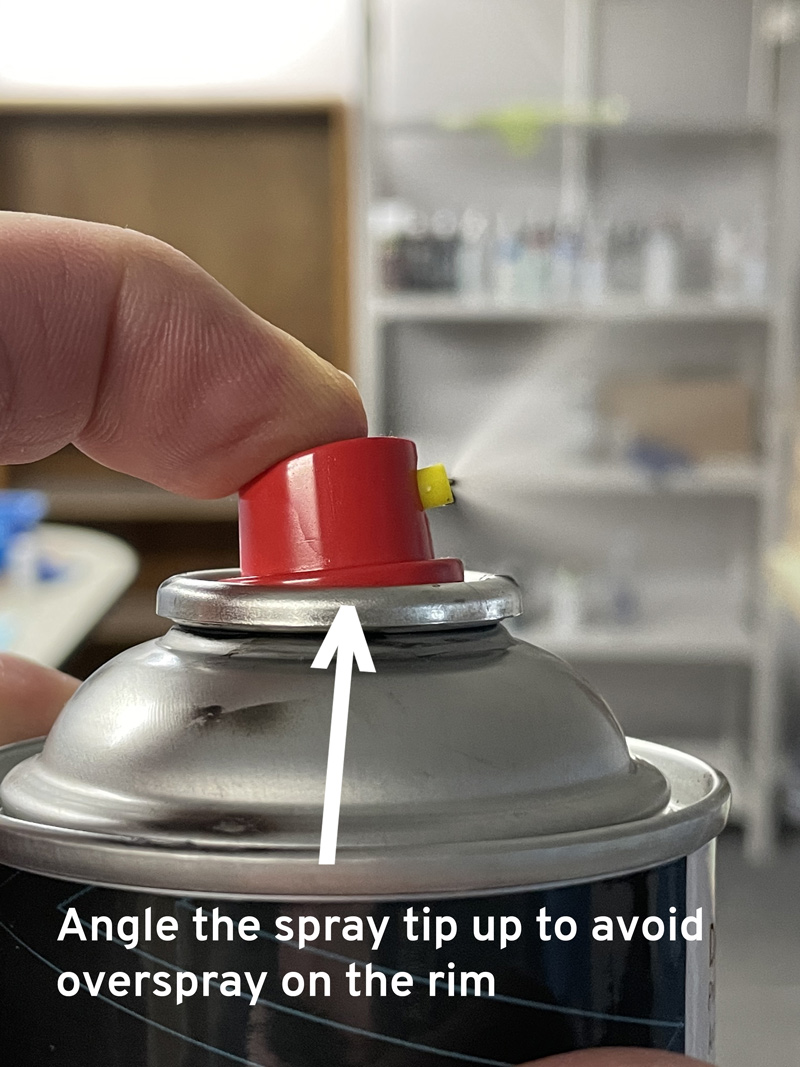How To
How to properly spray aerosol paint, to avoid spitting and splatter
There are a few reasons why an aerosol spray can might ruin your finish with paint splatter. Here's how to avoid that splatter.
Updated 1 month ago
Have you ever sprayed the final coat of touch up paint, only to have the can spit out a drop of paint that isn't atomized, ruining the perfect finish? This happens more often than you think, and its usually because of improper technique. The good news is it is avoidable.
Here is a simple recipe for getting more consistent, high quality aerosol spray finishes.
Make sure the aerosol can is at least at room temperature. A cold can of aerosol means that the propellant inside has contracted (remember freshman chemistry?) due to less kinetic energy resulting in fewer molecule collisions. That means there is less pressure in the can, so the paint is spraying under less pressure, and this can result in a few drops coming out that are not aerosolized.
If your ambient temperature is too cold (less than 70 degrees F), it might not be a good time to spray. However, you can buy yourself some working time by warming up the can a little more than room temperature. Do this by putting the can in a pot of hot tap water to raise the temperature, and thus, the pressure of the propellant. Don't boil water, or use anything hotter than your hand can tolerate, or you risk exploding the can. Also, don't put the can in a pot of hot tap water if the can is NOT already at room temperature because an ice cold aerosol can needs to warm up slowly to room temperature first, before warming further with water.
Your spray technique could be causing the problem. Notice as you put pressure on the spray
nozzle that it flexes, and can be angled forward or back. Also notice where on the nozzle you place your finger. Don't position your finger over the nozzle in such a way that your finger gets paint on it as the spray comes out. Your finger can accumulate paint, and the spray going by can blow a drop of paint onto your paint repair job. Likewise, if your finger pressure angles the spray tip forward, the spray could hit the rim of the can below the nozzle, and accumulate there. Same problem as with a finger in the way: the paint accumulates, and eventually, the spray blows a blob of liquid (not aerosolized) paint onto your paint repair job.Whenever you stop painting to check your work or the coverage, look at your finger, and the rim, and if paint accumulates, wipe it off.
See the photos below for examples of good and bad techniques.


How to fix splatters, nibs and other imperfections
If you are reading this article because you have some splatter or nibs in your newly painted finish, it can be corrected. You will have to dry sand the affected area with 500-1000 grit paper until the nibs or splatter is smoothed out, and then re-apply the base color using the techniques above. If the imperfections are severe, then you may need to move to an even lower grit paper to prevent the paper from clogging up with the material that is being sanded off. For example, 200-300 grit paper should be low enough to level the nibs or splatter, however at this grit of paper, you will now need to go back to 600 grit paper to remove the sanding marks and get the surface ready to paint again.
See our video, How to Spray ScratchesHappen Touch Up Paint below to see how to spray correctly.

